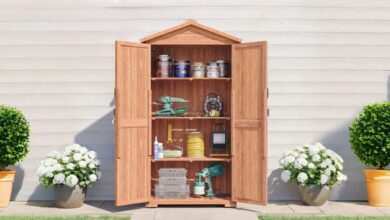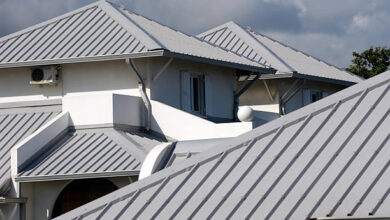Subway Tile 101: All About The NYC Subway-Inspired Tiles
Subway tiles, although not that popular in India, are pretty famous in the United States. As evident from the name, the terminology of these tiles is based on the look of the tiles in the New York City subways systems, although their early tiles were made out of white glass. Subway tiles are rectangular and low-fired glazed ceramic tiles that come in various sizes for usage in the home.
In the following sections, we will explore all the aspects related to Subway tiles. Before that, let’s check out the answer to the primary question here.
Why Are They Called Subway Tiles?
As mentioned above, they came to be known as subway tiles because of their predominant usage and presence in New York City’s subways. When the city needed a wall, it was essential to get an attractive and bright wall. However, equally essential was getting a wall that’s very easy to clean considering its exposure to thousands. After lots of research, it was found that these rectangular-shaped tiles were perfect for the job. And then, as they say, everything was history.
What Are Subway Tiles Made Of?
What are they made of – this is one of the most sought-after queries when it comes to subway tiles. While the subway tiles were made of ceramic initially, they are available in several different materials today. Of course, classic ceramic is always an excellent choice but so are multiple options like porcelain, glass, and metal. In fact, they are also made of natural stone in some cases. Thus, you’ll have plenty of materials to choose from for this tile, like onyx, travertine, slate, and marble. All these options are popular and widely available.
Subway Tile Facts
Manhattan Origin
The first subway tile was first seen in NYC’s underground subway system way back in 1904. Designers Christopher Grand La Farge and George C. Heins were asked to design a surface that could be easily cleaned but also feel familiar, safe, and friendly to city-dwellers using underground transit for the very first time in their lives. After that came these subway tiles. Their slightly curved edges and glossy finish meant that the subway stations were sanitary, polished, and bright.
Obsession With Hygiene
As an ‘easy to clean’ nature was one of the major factors driving the creation of these tiles, hygiene has always been associated with these tiles. Due to their glazed surface, they are stain-resistant and reflect a lot of light with their elegant white colour. Besides making the underground area look a bit bigger, they quickly gained a reputation for being practical and classic. As this look and its hygienic properties grew in demand, they quickly transcended to homes in kitchens, bathrooms, and shops.
Not For Floors
Although they are good-looking and have a lot of history ingrained, floors are one place where subway tiles really can’t stand up to the hype. As floor tiling needs to be sturdy and durable due to heavy foot traffic and weights, subway tiles’ thin nature is unable to sustain the regular wear and tear that the floors are subjected to.
Glass And Stone
Earlier, subway tiles were made out of white glass in the first few versions. With the passage of time, these tiles came to be available in many materials like natural stone, marble, and even glass. These materials give you an edge by providing a unique look. Ultimately, the ground rule for an effective subway tile is a thin, low-fired, glazed ceramic tile.
Is Subway Tile Still Popular?
As you know by now, after its very first inception in 1904, the ‘subway tile’ became widely popular and then got famous in other transportation hubs around the world. Its simplistic appearance and the ease of maintaining hygiene meant that it soon started featuring in kitchen and bathroom walls. It is a testament to its timelessness that even today, its popularity continues to grow for its simple rectangular nature that is hard to beat when it comes to minimalism.
How Much Is A Subway Tile Backsplash?
The pricing for a subway tile backsplash depends entirely on the kitchen’s square footage and the price of the shortlisted tile, as tiles in this category come in various ranges. Fortunately, the area of backsplashes is relatively smaller than other parts of the house, meaning that it will be lesser than laying tiles for the living room or bedroom.
If all this sounds confusing, you can also connect with in-house tile experts to get a rough estimate of installation, tile price and other queries.
Creative Ways to Use Subway Tile
Experiment With Colour
Just because the original subway tiles were white in colour doesn’t mean you have to follow the rule! Nowadays, many subway tiles come in various shades and colours. Be it blue, brown, beige, or green, there are many colours for you to choose from.
Mix And Match
If you can’t bring yourself to choose a single colour for your kitchen backsplash or your bathroom wall concept, you can throw in different colours to make it visually stronger. Try 2-3 colours with the primary colours to create a statement wall. White with blue, grey, and green can work well too.
Patterns or Natural Look
When choosing the subway tiles, you need not always go for the monochromatic look. You can pick the natural look rendered by their materials – natural stone, granite, wood and more or natural patterns. You can also think of graphic designs, art deco-inspired and floral designs. The choice is entirely yours.
Go Small
Less is always more! You can use small tiles to create a subway tile mosaic effect in your home. This option is excellent for smaller tile applications like kitchen or bathroom backsplashes.
Change Up The Dimensions And Texture
Subway tiles are typically available in 3 x 6 inches size, but it’s not a hard and fast rule. You can find them in much larger or smaller sizes as per your requirement. Generally speaking, a thinner and elongated tile makes the backsplash look like having a running bond tile pattern. You can likewise add some flavour by adding some texture to the tiles. Textured subway tiles are known for giving more depth and aesthetic appeal to the space.
Subway tiles have been around for over a century and are still winning hearts, thanks to their timelessness, history, minimalism, design and availability. You can get yourself a piece of NYC into your home the next time your home is revamped. Your kitchen backsplash could do without the usual brown and beige colour and go for the subway tiles.
Author Bio:
Isha Tandon has worked within the architecture and interior design industry as a flooring consultant expert – specializing in tiles, stones, and terrazzo. She has worked with Orientbell Limited, a leading tile manufacturer in India, as a product development manager in the design team and has recently joined the marketing team as their digital content expert. Her experience comes in handy in understanding the audience as she creates value-driven functional & informational content for the readers. She creates lifestyle pieces that focus on interior design products, trends, and processes. She loves to travel to historic places with rich architecture.
Read More: 6 Ways to Prepare a Tasty Seafood Dinner



